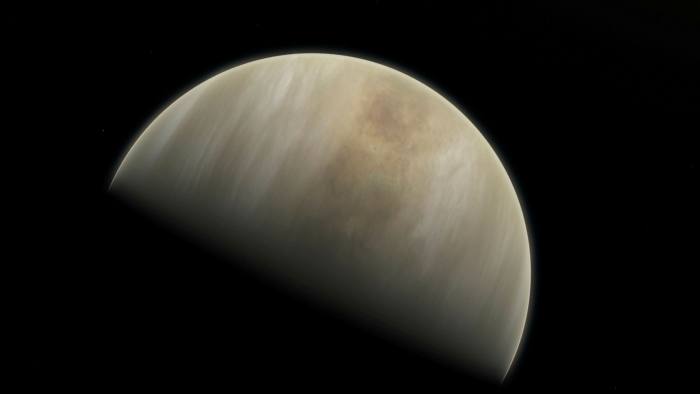
Astronomers discover possible signs of life in clouds above Venus
Microbes may be generating phosphine gas in planet’s upper atmosphere, researchers find
by Clive CooksonAstronomers have found a possible sign of life in the upper atmosphere of the planet Venus, Earth’s nearest neighbour.
Using two powerful telescopes an international team has detected traces of phosphine — a molecule thought to indicate biological activity — in the relatively cool cloud systems about 60km above the planet’s hot surface.
Some astrobiologists have speculated for decades that Venus’s clouds might contain aerial microbes but the idea has received less attention than the search for life elsewhere in the solar system, particularly on Mars or on moons of Jupiter and Saturn that contain oceans beneath their icy surfaces. The team of UK, US and Japanese astronomers published the phosphine discovery in the journal Nature Astronomy.
“This was an experiment made out of pure curiosity,” said Professor Jane Greaves of Cardiff University, the project leader. “I thought we’d just be able to rule out extreme scenarios, like the clouds being stuffed full of organisms. When we got the first hints of phosphine in Venus’s spectrum, it was a shock.”
The team first used a spectrometer at the James Clerk Maxwell Telescope in Hawaii to analyse the chemistry of the Venusian atmosphere. The results were then confirmed by the Alma observatory in Chile.

Scientists who were not involved in the project responded with guarded excitement. Laura McKemmish, a spectroscopist at the University of New South Wales, said: “This piece of research marks the start of a new era in the search for extraterrestrial life.
“While we need to be cautious, scientists don’t yet know how to explain the observed abundance of the phosphine molecule under the conditions in Venus’ clouds without life,” she said. “The authors essentially say: ‘We think we’ve found life on Venus: prove us wrong!’”
The team assessed an exhaustive series of non-biological ways that could have generated phosphine in the Venusian atmosphere. But none of the processes, such as volcanic eruptions, lightning or photochemical reactions involving minerals from the planet’s surface could have made as much as 0.01 per cent of the identified levels of phosphine, the researchers said.
On Earth some anaerobic bacteria generate substantial amounts of phosphine, a simple molecule with a phosphorus atom linked to three hydrogen atoms. Industrial manufacturing is the only other known source of the smelly and toxic gas.
Any microbes on Venus would be different to their counterparts on Earth. Venus has the hottest surface of any planet in the solar system, with average temperatures of more than 400C, hot enough to melt lead. At 60km above the surface, where the phosphine was found, the temperature is a tolerable 30C, though the air is extremely acidic.
One theory is that microbes might have grown inside liquid droplets in Venusian clouds above 50km and then sunk down to the hotter layers of the atmosphere below 48km, where they dry out. “Spores” would then drift upwards, rehydrate and repopulate the more hospitable top layers, members of the research team said in a separate paper published in the journal Astrobiology.